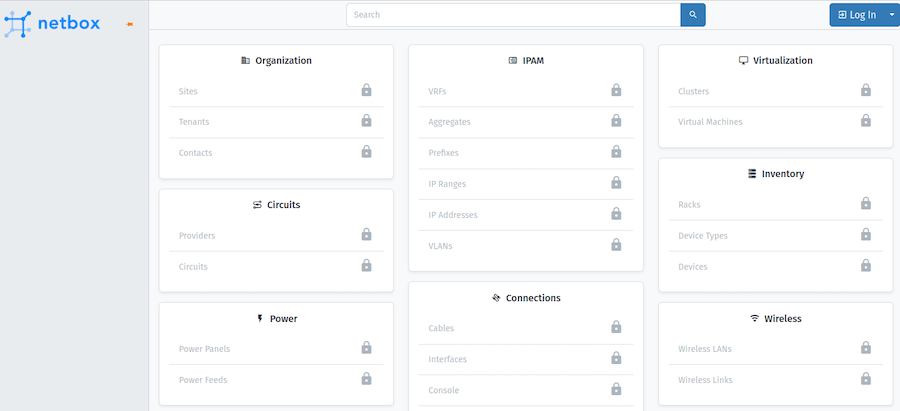How To Install NetBox on Debian 12

NetBox stands as one of the most powerful open-source Infrastructure Resource Modeling (IRM) solutions available today. Originally developed by the DigitalOcean team, this robust network automation platform has evolved into an independent project that helps organizations manage their network infrastructure with precision and efficiency. This comprehensive guide will walk you through installing NetBox on Debian 12, ensuring you have a fully functional network documentation and automation platform.
Prerequisites and System Requirements
Before diving into the NetBox installation process, ensure your Debian 12 system meets the essential requirements. You’ll need a Debian 12 server or desktop environment with root or sudo privileges to execute administrative commands. The minimum system specifications include 2GB RAM, 10GB available storage space, and a dual-core processor for optimal performance.
Network connectivity remains crucial for downloading packages and dependencies. Consider having a domain name ready if you plan to implement SSL/TLS encryption for enhanced security. Python 3.10 or later versions are mandatory since NetBox is built on the Django framework, which requires modern Python implementations.
Installing System Dependencies
Essential Package Installation
NetBox requires numerous system dependencies to function correctly. Start by updating your Debian package repository to ensure you’re working with the latest software versions:
sudo apt update && sudo apt upgrade -yInstall the comprehensive list of required dependencies using a single command:
sudo apt install apache2 postgresql postgresql-common libpq-dev redis-server git python3 python3-pip python3-venv python3-dev build-essential libxml2-dev libxslt1-dev libffi-dev libssl-dev zlib1g-dev -yThis command installs Apache2 web server, PostgreSQL database server, Redis cache management system, Python development tools, and various libraries essential for NetBox operation. The build-essential package provides compilation tools needed for Python package installations.
Verification Steps
After installation completes, verify each service status to ensure proper configuration. Check Apache2 service status:
sudo systemctl is-enabled apache2
sudo systemctl status apache2Verify PostgreSQL installation and service status:
sudo systemctl status postgresql
sudo systemctl is-enabled postgresqlConfirm Redis server functionality:
sudo systemctl status redis-server
redis-cli pingThe Redis CLI should respond with “PONG” indicating successful installation. These verification steps prevent potential issues during the NetBox installation process.
PostgreSQL Database Configuration
Database Server Setup
PostgreSQL serves as NetBox’s primary database backend, requiring specific configuration for optimal performance. Start and enable the PostgreSQL service to ensure automatic startup:
sudo systemctl start postgresql
sudo systemctl enable postgresqlAccess the PostgreSQL command interface as the postgres superuser:
sudo -u postgres psqlThis command switches to the postgres user account and opens the PostgreSQL interactive terminal where you’ll configure the database environment.
Database and User Creation
Create a dedicated database for NetBox operations:
CREATE DATABASE netbox;Establish a specialized user account with appropriate permissions:
CREATE USER netbox WITH PASSWORD 'your_secure_password';Replace ‘your_secure_password’ with a strong, unique password following security best practices. Grant necessary privileges to the netbox user:
GRANT ALL PRIVILEGES ON DATABASE netbox TO netbox;
ALTER USER netbox CREATEDB;
\qTest the database connection using the newly created credentials:
psql -U netbox -h localhost -d netboxEnter the password when prompted. Successful authentication confirms proper database configuration.
NetBox Installation Process
System User Creation
Security best practices recommend creating a dedicated system user for NetBox operations. This approach limits potential security risks by isolating NetBox processes:
sudo useradd -r -d /opt/netbox -s /usr/sbin/nologin netboxThe `-r` flag creates a system user, `-d` specifies the home directory, and `-s` sets a non-login shell for enhanced security.
Source Code Download
Navigate to the /opt directory and clone the official NetBox repository:
cd /opt
sudo git clone -b master --depth 1 https://github.com/netbox-community/netbox.gitThe `–depth 1` parameter performs a shallow clone, reducing download time and storage requirements. Set proper ownership for the NetBox directory:
sudo chown -R netbox:netbox /opt/netboxThis ensures the netbox user has full access to the installation directory and its contents.
Python Virtual Environment
Navigate to the NetBox directory and create an isolated Python environment:
cd /opt/netbox
sudo -u netbox python3 -m venv venvActivate the virtual environment and install NetBox dependencies:
sudo -u netbox /opt/netbox/upgrade.shThe upgrade script automatically handles virtual environment activation, dependency installation, database migrations, and static file collection. This automated approach reduces configuration errors and ensures consistent installations.
NetBox Configuration
Configuration File Setup
NetBox uses a Python-based configuration file for customization. Copy the example configuration and create your custom settings:
cd /opt/netbox/netbox/netbox/
sudo -u netbox cp configuration_example.py configuration.pyGenerate a secret key for Django security:
python3 ../generate_secret_key.pyEdit the configuration file using your preferred text editor:
sudo -u netbox nano configuration.pyEssential Configuration Parameters
Configure the following critical settings in your configuration.py file:
ALLOWED_HOSTS: Specify your server’s IP address or domain name:
ALLOWED_HOSTS = ['your-server-ip', 'your-domain.com']DATABASE Configuration: Update database connection settings:
DATABASE = {
'NAME': 'netbox',
'USER': 'netbox',
'PASSWORD': 'your_secure_password',
'HOST': 'localhost',
'PORT': '',
'CONN_MAX_AGE': 300,
}REDIS Configuration: Configure caching and session storage:
REDIS = {
'tasks': {
'HOST': 'localhost',
'PORT': 6379,
'PASSWORD': '',
'DATABASE': 0,
'SSL': False,
},
'caching': {
'HOST': 'localhost',
'PORT': 6379,
'PASSWORD': '',
'DATABASE': 1,
'SSL': False,
}
}SECRET_KEY: Insert the generated secret key:
SECRET_KEY = 'your_generated_secret_key_here'Save the configuration file and set appropriate permissions:
sudo chmod 640 /opt/netbox/netbox/netbox/configuration.pyDatabase Migration and Admin User
Database Initialization
Activate the virtual environment and perform initial database migrations:
cd /opt/netbox
source venv/bin/activate
cd netbox
python3 manage.py migrateDatabase migrations create the necessary table structure and establish relationships required for NetBox functionality. Collect static files for web interface styling:
python3 manage.py collectstatic --no-inputThis process gathers CSS, JavaScript, and image files from various Django applications into a central location for efficient web serving.
Administrator Account Creation
Create a superuser account for NetBox administration:
python3 manage.py createsuperuserFollow the prompts to set username, email address, and password. Choose a strong password following organizational security policies. Test the installation by running the development server:
python3 manage.py runserver 0.0.0.0:8000 --insecureAccess `http://your-server-ip:8000` in a web browser to verify successful installation. The NetBox login page should appear, confirming proper configuration.
Systemd Service Configuration
Service Files Setup
Copy the provided systemd service files to enable automatic NetBox startup:
sudo cp /opt/netbox/contrib/netbox.service /etc/systemd/system/
sudo cp /opt/netbox/contrib/netbox-rq.service /etc/systemd/system/These service files configure NetBox’s main application and background task processing. Edit the main service file if necessary:
sudo nano /etc/systemd/system/netbox.serviceEnsure the service file contains correct paths and user specifications.
Service Management
Reload systemd to recognize the new service files:
sudo systemctl daemon-reloadEnable services for automatic startup:
sudo systemctl enable netbox netbox-rqStart the NetBox services:
sudo systemctl start netbox netbox-rqVerify service status:
sudo systemctl status netbox
sudo systemctl status netbox-rqBoth services should show active (running) status, indicating successful configuration.
Apache2 Reverse Proxy Setup
Virtual Host Configuration
Create an Apache2 virtual host configuration for NetBox:
sudo nano /etc/apache2/sites-available/netbox.confAdd the following configuration:
<VirtualHost *:80>
ServerName your-domain.com
DocumentRoot /opt/netbox/netbox/static
ProxyPreserveHost On
ProxyPass /static/ !
ProxyPass / http://127.0.0.1:8001/
ProxyPassReverse / http://127.0.0.1:8001/
Alias /static /opt/netbox/netbox/static
<Directory /opt/netbox/netbox/static>
Options Indexes FollowSymLinks MultiViews
AllowOverride None
Require all granted
</Directory>
</VirtualHost>Enable required Apache modules:
sudo a2enmod proxy
sudo a2enmod proxy_http
sudo a2enmod headersEnable the NetBox site and disable the default site:
sudo a2ensite netbox
sudo a2dissite 000-defaultSecurity Configuration
For production environments, implement SSL/TLS encryption. Install Certbot for Let’s Encrypt certificates:
sudo apt install certbot python3-certbot-apacheObtain SSL certificates:
sudo certbot --apache -d your-domain.comConfigure firewall rules to allow HTTP and HTTPS traffic:
sudo ufw allow 'Apache Full'
sudo ufw enableRestart Apache to apply configuration changes:
sudo systemctl restart apache2Testing and Verification
Initial Testing
Access your NetBox installation through a web browser using your domain name or server IP address. The NetBox login interface should load without errors. Log in using the administrator credentials created earlier.
Verify dashboard functionality by navigating through different sections. Check system status by accessing the admin interface and reviewing service health indicators.

Performance Verification
Monitor service status regularly:
sudo systemctl status netbox netbox-rq apache2 postgresql redis-serverReview log files for potential issues:
sudo journalctl -u netbox -f
sudo tail -f /var/log/apache2/error.logTest database connectivity and Redis cache performance through the NetBox interface administrative tools.
Common Troubleshooting
Database Connection Issues
If NetBox cannot connect to PostgreSQL, verify database credentials in the configuration file. Check PostgreSQL service status and ensure the netbox user has appropriate permissions.
Test database connectivity manually:
psql -U netbox -h localhost -d netbox -c "SELECT version();"Service Startup Problems
For service-related issues, examine systemd logs:
sudo journalctl -u netbox --no-pager
sudo journalctl -u netbox-rq --no-pagerVerify Python virtual environment activation and dependency installation:
cd /opt/netbox
source venv/bin/activate
python3 -c "import django; print(django.get_version())"Permission and Access Errors
Ensure proper file ownership and permissions:
sudo chown -R netbox:netbox /opt/netbox
sudo chmod -R 755 /opt/netboxCheck Apache error logs for permission-related issues:
sudo tail -f /var/log/apache2/error.logSecurity Best Practices
Implement regular security updates for your Debian system and NetBox installation. Configure automatic security updates:
sudo apt install unattended-upgrades
sudo dpkg-reconfigure unattended-upgradesRegularly backup your NetBox database and configuration files. Create automated backup scripts to ensure data protection:
sudo -u postgres pg_dump netbox > netbox_backup_$(date +%Y%m%d).sqlMonitor NetBox access logs and implement intrusion detection systems. Configure fail2ban to protect against brute-force attacks:
sudo apt install fail2banRestrict database access to localhost only and use strong passwords for all accounts. Implement two-factor authentication for administrative users when possible.
Congratulations! You have successfully installed NetBox. Thanks for using this tutorial for installing NetBox modern networks on Debian 12 “Bookworm” system. For additional help or useful information, we recommend you check the official NetBox website.